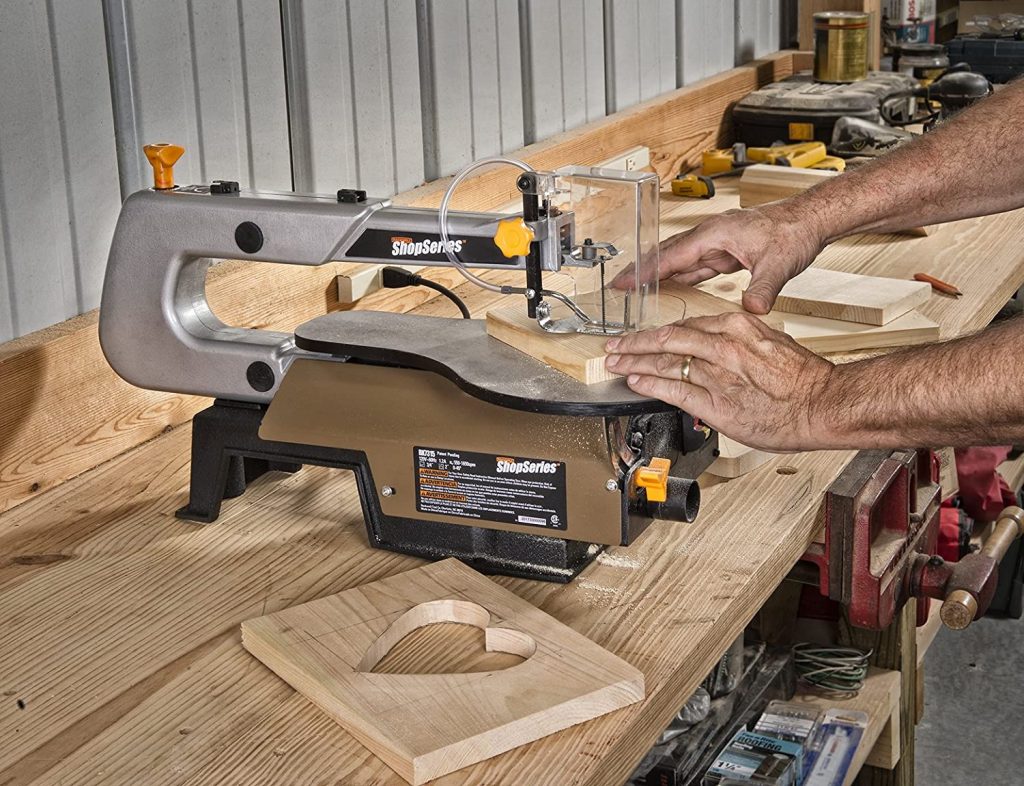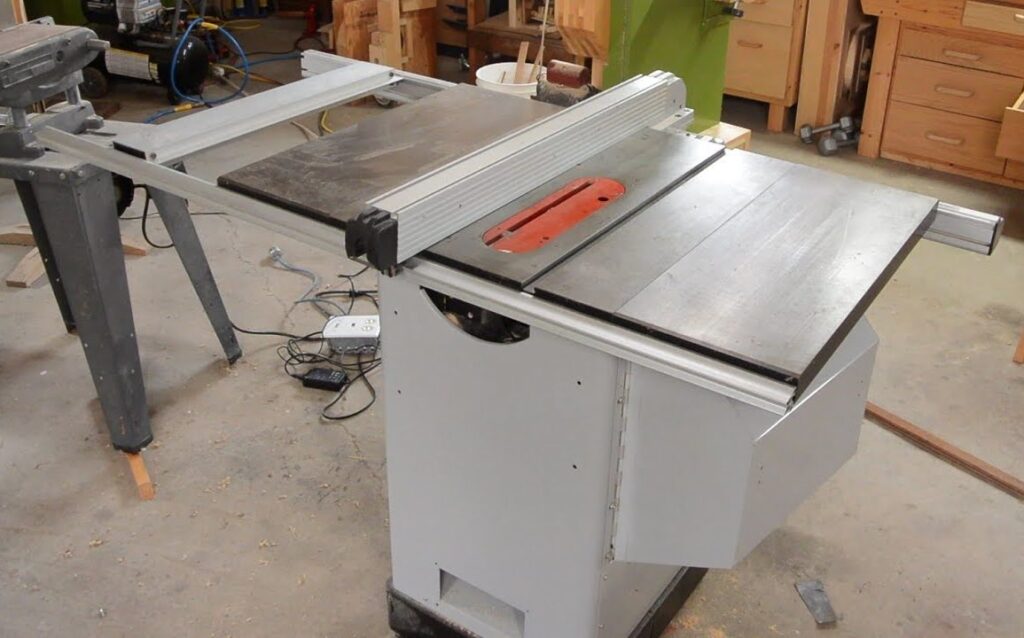Now, you’ve probably just got a reciprocating saw, or you’re in the process of acquiring one. But you want to be sure it will give you the value for your money or will not end up useless as your last hand saw. The next question you should be asking is what are the uses for a reciprocating saw.
Well, a reciprocating saw uses the same technique as a woodworking saw or a handheld hacksaw with a metal blade. Besides, it has some additional uses. The reciprocating saw is also used to cut pipes and metal projections that are flush with the wall or floor. You can also use it to cleanly cut branches from trees and shrubs. The reciprocating saw is also used for making cuts in plastic tubes and pipes, wooden slats or metal profiles, and many other things.
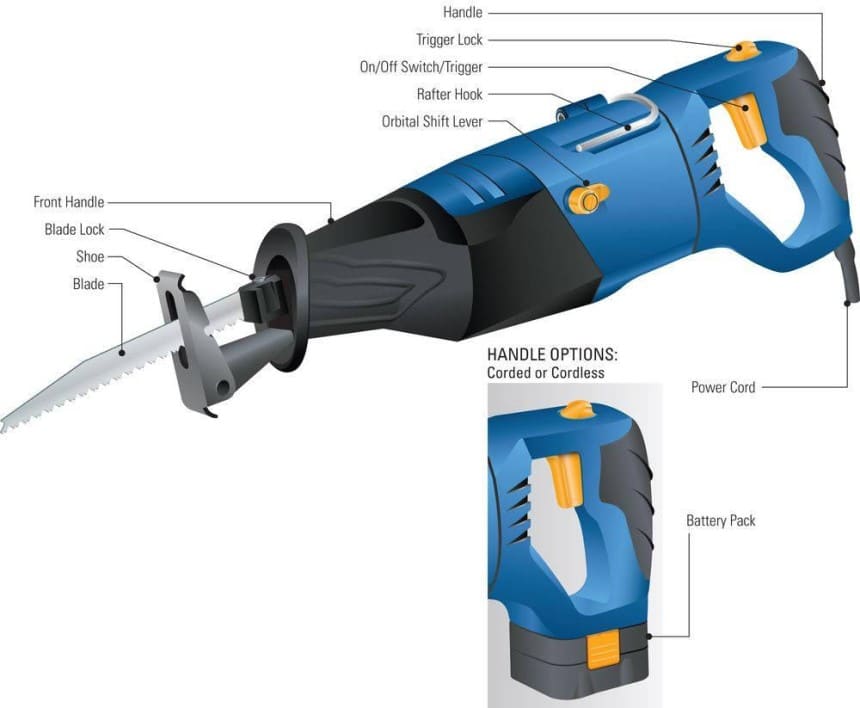
The reciprocating saw is a power cutting tool that looks like an electric hand saw, so to speak. Its cutting blade can remain in the air, without supports. That is, as if it were a sword, it does not have an upper reinforcement arch.
This cast iron machine can be of impressive size and weight. The reciprocating saw is available in different types: manual, automatic, and semi-automatic or the corded and cordless.
While the corded models, usually equipped with higher amps, are ideal for heavy-duty construction, plumbing and demolition jobs, cordless models are suitable for jobs anywhere in the house, on construction sites and in the garden. According to most reviews, one of the most popular cordless models is the BLACK+DECKER BDCR20C 20V MAX, which has a built-in battery and comes with a charger.
Reciprocating saws have a large number of applications due to their solid yet user-friendly layout. The many different types of blade accessories available which feature a wide assortment of shoe designs further allow them to cut most materials. Take a look below at some of the most common uses.
Unlike a woodworking or hand saw, a reciprocating saw can easily and effectively be used to make straight and curved cuts. As you can use it to cut with one hand, the other hand can be used for balance and for ensuring you have a smooth and precise cut. Thinner, flexible, and longer blades will let you have free-hand curves to an extent.
Reciprocating saws are incredibly well known in demolition during construction work. Tasks like removing walls are ideal for your reciprocating saw due to its ability to generate precision cuts with electricity, allowing you to quickly work on anything in its path. Their efficiency on-site is unmatched.
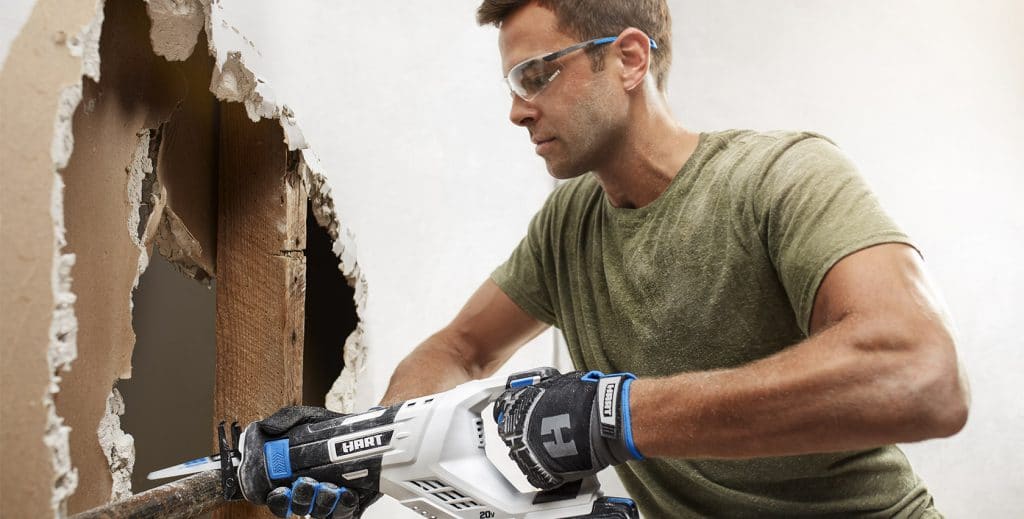 Pruning
PruningMaybe your backyard could have a little renovation? Don’t worry; a reciprocating saw has you covered! The blade plane makes it the perfect instrument for cutting unwanted branches and reducing overgrown slopes, giving your garden a brighter makeover.
We already mentioned that reciprocating saws help you make straight and curved cuts. This means you can use the tool to make a frame. You can use it to cut frames precisely without chipping on small pieces. You can use the reciprocating saw to brace and cut framework and formwork.
Reciprocating saws are your best bet for plumbing works as they can cut PVC pipes. You can also use them to cut through cast-iron pipes. You can use them to cut through notches and holes. You can also use it to cut through drywalls. As a plumber, it’s a must get and as a home DIYer, it’s one of the most versatile tools for you.
Yes, you can even sand it using a reciprocating saw! Just put on a sanding pad and there you go!
Reciprocating saws are typically used among emergency services due to their lightweight yet strong design. This makes them perfect for advanced materials in harsh conditions, such as when trying to access someone stuck in a building or a car in an accident.
They couldn’t be much easier to use! Let’s take a look at a four-step guide that will get you triggering a reciprocating saw very quickly!
The most important of all is the choice of blade attachment. Associating the wrong blade with the wrong job can lead to poor results and can also increase the chances of a crash.
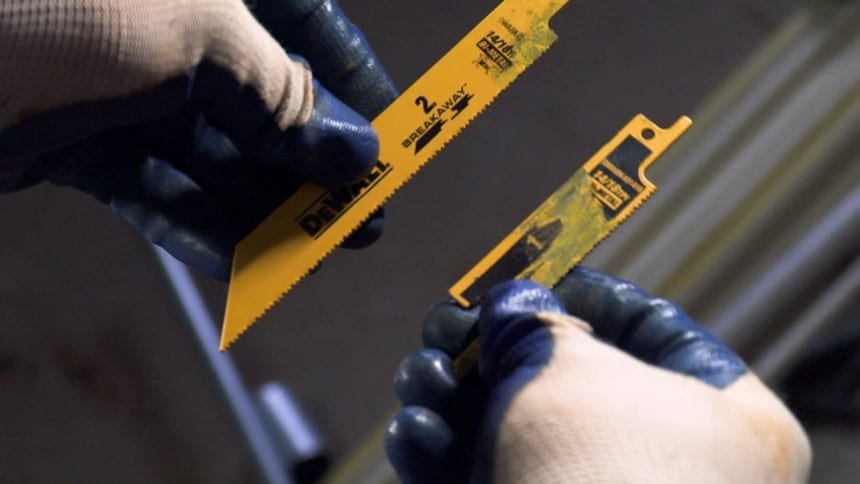 Secure the blade
Secure the bladeSimply insert the blade, the teeth pointing exactly the same as the handle until it is fully seated. After that, turn the hex key clockwise to tighten the blade collar until the blade is protected. Some reciprocating saws feature a quick-release system that just requires the push of a button or switch to change accessories!
Many reciprocating saws include a variable speed trigger. In cases like this, gently squeeze the trigger to cause the blade to deactivate. As the blade begins to cut through the substance, increase the speed.
All you have to do is cut! Make sure to apply even pressure in your preferred direction to ensure a controlled and precise cut.
Safety should be your watchword whenever you’re using or trying to learn to use a reciprocating saw. Consider the following safety rules whenever you’re with a reciprocating saw:
Maintain a good two-handed grip on the saw and a balanced posture at all times. Never put yourself in a position of imbalance.
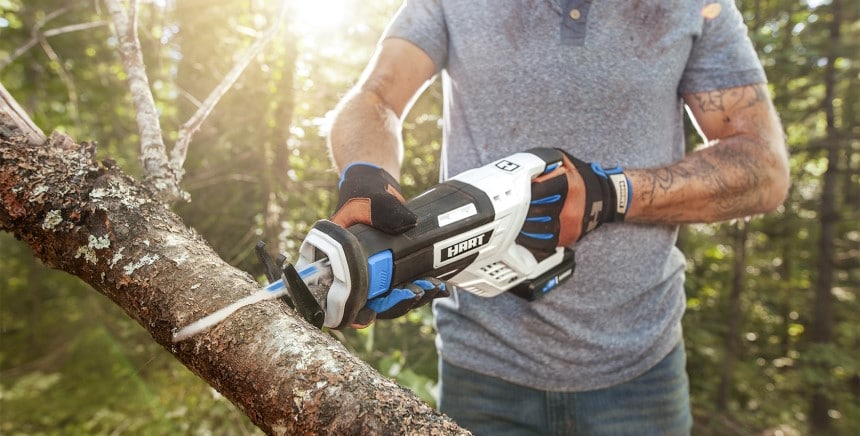 Always use protective gear
Always use protective gearWear safety glasses, especially when cutting holes in the ceiling. Never wear loose clothing or jewelry. If you have long hair, tie it up. At all times, ensure you’re wearing a pair of gloves. The most recommended gloves for construction work, gardening, etc. is the heavy-duty G & F Products 12 Pairs Gloves which is made of latex rubber.
Before changing the blade, ensure that you turn off and unplug the saw or that the battery is removed.
Finally, ensure you put your foot or hand on the surface to compensate for the push-pull movement of the blade.
Owning a reciprocating saw will help save you money and time by purchasing a variety of tools to handle all the chores around the house. The wide selection of accessories available makes a reciprocating saw the best all-in-one power tool. The reciprocating saw uses vary. You can use it for pruning during gardening works, for demolitions and construction works on sites, to make straight and curved cuts, sanding holes, and making frameworks. It is ideal for cutting in tight spaces where the handle or frame of the hand saw (the bow) will not enter. It can cut deep and long items where the saw blade barely enters.

